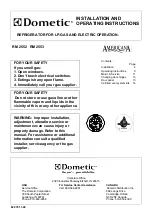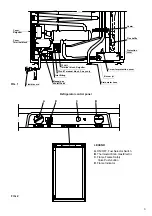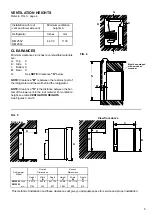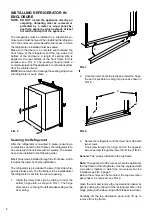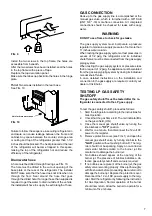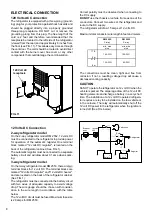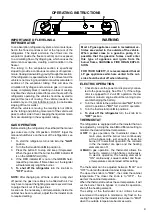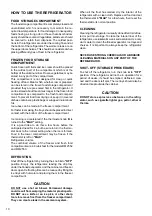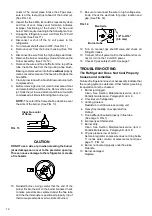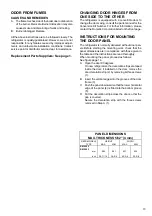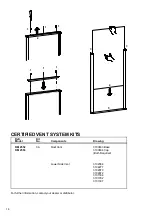
HOW TO USE THE REFRIGERATOR
FOOD STORAGE COMPARTMENT
The food storage compartment is completely closed and
unventilated, which is necessary to maintain the re-
quired low temperature for food storage. Consequently,
foods having a strong odor or those that absorb odors
easily should be covered. Vegetables, salads etc. should
be covered to retain their crispness. The coldest posi-
tions in the refrigerator are under the cooling fins and at
the bottom of the refrigerator. The warmer areas are on
the upper door shelves. This should be considered when
placing different types of food in the refrigerator.
FROZEN FOOD STORAGE
COMPARTMENT
Quick frozen soft fruits and ice cream should be placed
in the coldest part of the compartment which is at the
bottom of the aluminum liner. Frozen vegetables, may be
stored in any part of the compartment.
This compartment is not designed for deep or quick
freezing of food. Meat or fish, whether raw or prepared,
can be stored in the frozen food storage compartment
provided they are pre-cooled first in the refrigerator. It
can be stored about three times longer in the frozen food
compartment as compared to the fresh food compart-
ment. To prevent food from drying out, keep it in covered
dishes, containers, plastic bags or wrapped in aluminum
foil.
Ice cubes can be made in the freezer compartment.
For faster ice making, the trays should be placed in direct
contact with the bottom of the freezer compartment.
Ice making is accelerated if the thermostat knob B is
turned to the "MAX" setting.
It is a good idea to do this a few hours before the
anticipated need for ice, but be sure to turn the thermo-
stat back to the normal setting when the ice is formed.
Food in the lower compartment may be frozen if the
thermostat is left on "MAX".
Refrigerator volume
The combined volume of the freezer and fresh food
compartments are 4.8 cubic feet for the models RM 2552
and RM 2553.
DEFROSTING
Shut off the refrigerator by turning the knob A to "OFF"
position. Empty the refrigerator, leaving the drip tray
under the finned evaporator, and the cabinet and freezer
doors open. Defrosting time can be reduced by filling the
ice trays with hot water and placing them in the freezer
compartment.
CAUTION
DO NOT use a hot air blower. Permanent damage
could result from warping the metal or plastic parts.
DO NOT use a knife or an ice pick, or other sharp
tools to remove frost from the freezer compartment.
They can create a leak in the ammonia system.
When all the frost has melted, dry the interior of the
refrigerator with a clean cloth. Replace all food and set
the thermostat to "MAX" for a few hours, then reset the
thermostat to its normal position.
CLEANING
Cleaning the refrigerator is usually done after it is defros-
ted or put into storage. To clean the interior liner of the
refrigerator, use lukewarm weak soda solution. Use only
warm water to clean the finned evaporator, ice trays and
shelves. It is important to always keep the refrigerator
clean.
NEVER USE STRONG CHEMICALS OR ABRASIVE
CLEANING MATERIALS ON ANY PART OF THE
REFRIGERATOR.
SHUT- OFF (STORAGE PROCEDURE)
To shut off the refrigerator, turn the knob A to "OFF"
position. If the refrigerator will not be in operation for a
period of weeks, it should be emptied, defrosted, clea-
ned and the doors left ajar. The ice trays should also be
dried and kept outside the cabinet.
CAUTION
DO NOT store explosive substances in the refrig-
erator, such as cigarette lighter gas, petrol, ether or
the like.
10

